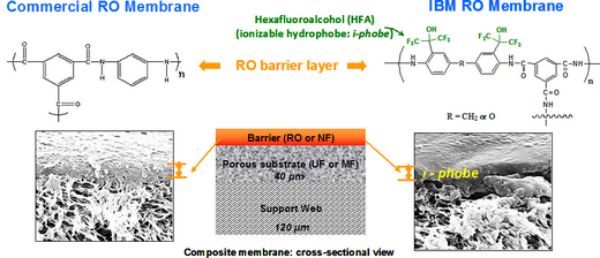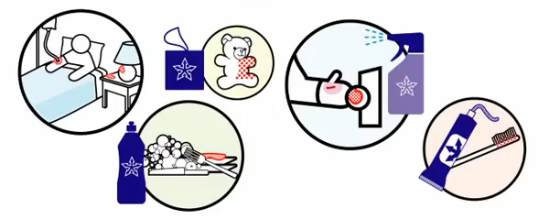Polymer VS bacteria. Who will win?

Good afternoon, dear Habrausers!
Today I would like to discuss with you the problem of the interaction of bacteria and antibiotics, which has long been worrying the minds of many scientists.
The main problem is that bacteria (despite their small size) are highly resilient. To combat them, new types of drugs - antibiotics are periodically developed. The constant development of a new medicine is the only way to deal with them, because some time after the appearance of a new antibiotic (and this may even be a very short period of time), it (that same antibiotic) sharply begins to lose its effectiveness.
Those. the process of fighting bacteria is as follows: the bacteria are treated with a new drug -> approximately 99.99 percent of all bacteria die (which, at first glance, is pretty good) -> the remaining 0.01 percent continues to multiply exponentially -> everything returns to its original position with only one change, new bacteria become immune to the new drug. And again, new developments are needed.
But the pace of development of new drugs is not keeping pace with the pace of the emergence of new types of pathogens. People constantly need a new tool to deal with them. The situation is aggravated by the fact that in recent years antibiotic-resistant bacteria are increasingly causing outbreaks of life-threatening infections.
Is there hope?

More recently, researchers from IBM Research and the Singapore Institute of Bioengineering and Nanotechnology have developed new types of polymers that seek to detect and destroy antibiotic-resistant bacteria and infectious agents, such as Staphylococcus aureus resistant to methicillin (Methicillin-Resistant Staphylococcus Aureus, MRSA).
This discovery was a side effect of the development of new semiconductor manufacturing technologies (!). Chemists at IBM Research in Almaden, California, have been working on a new method for etching microscopic structures on silicon substrates.
During the research, new materials were developed, the particles of which, having an electric potential, are grouped together and form polymers that protect the silicon surface from the etching substance.
After the required materials were found, and the technology worked as necessary, scientists conducted additional studies to find out whether it is possible to use these materials elsewhere. As a result of several experiments, nanoparticles appeared that destroy bacteria by perforating the bacterial membrane.
By what principle do these polymers fight bacteria?
Nanoparticles are made of a special polymer material. When interacting with water in the body or on the human body, they themselves collect in droplets of 200 nanometers in size (which is 50,000 times thinner than a human hair). These drops have a small positive electric charge and are therefore attracted to bacteria that have a negative electric charge, which makes them different from the cells of the human body. Next, the nanodroplets envelop the membranes of the shells of bacteria and punch large holes in them, whereby they destroy bacteria that are difficult to treat without destroying the healthy cells around them.

Bacteria before (left) and 8 hours after (right) incubation with nanoparticles
Returning to the problem of bacterial recovery, it is necessary to emphasize that these polymers also impede the development of resistance to drugs in bacteria. They break through the cell wall and membrane into the bacterial cell, which suggests a fundamentally different way of attacking infected cells compared to traditional antibiotics.
Since each nanodroplet can hit many targets, there is no need to use their high concentration. After a few days, the nanoparticles decompose into carbon dioxide and non-toxic primitive alcohol compounds, which are excreted from the body naturally.
 According to James Hedrick (a scientist at IBM Research - Almaden Research Center for Advanced Organic Materials), “Thanks to this discovery, today we can use the results of many years of research and development in the field of materials science, which were carried out in the semiconductor industry, to create a fundamentally new a drug delivery mechanism capable of making drugs more effective and highly specialized in terms of therapeutic effect. ”
According to James Hedrick (a scientist at IBM Research - Almaden Research Center for Advanced Organic Materials), “Thanks to this discovery, today we can use the results of many years of research and development in the field of materials science, which were carried out in the semiconductor industry, to create a fundamentally new a drug delivery mechanism capable of making drugs more effective and highly specialized in terms of therapeutic effect. ” Yiyan Yang, team leader at the Institute of Bioengineering and Nanotechnology, Singapore, also stresses: “Using our new nanostructures, we can offer a truly effective therapeutic solution for treating MRSA infections and other infectious diseases.”
Yiyan Yang, team leader at the Institute of Bioengineering and Nanotechnology, Singapore, also stresses: “Using our new nanostructures, we can offer a truly effective therapeutic solution for treating MRSA infections and other infectious diseases.” Unlike most antibacterial agents, these structures are biodegradable (i.e. biodegradable), which expands the scope of their potential use, since, as already mentioned, they can be excreted from the body naturally (rather than remain in the body and accumulate in its organs).
When manufactured on an industrial scale, these biodegradable nanostructures can be introduced directly into the body or applied to the skin, which will allow treating skin infections with everyday items such as deodorants, soap, wet wipes and other disinfectants.
These nanostructures can also be used to heal wounds, to treat tuberculosis and pulmonary infections.
A new method of finding and physically attacking bacteria and microorganisms is an extremely promising way to fight disease.

Currently, IBM Research researchers are working on the further development and testing of technology for combating pathogens using polymeric material and are looking for a partner company that will commercialize such technology.
In your opinion, will this discovery change life for the better?

